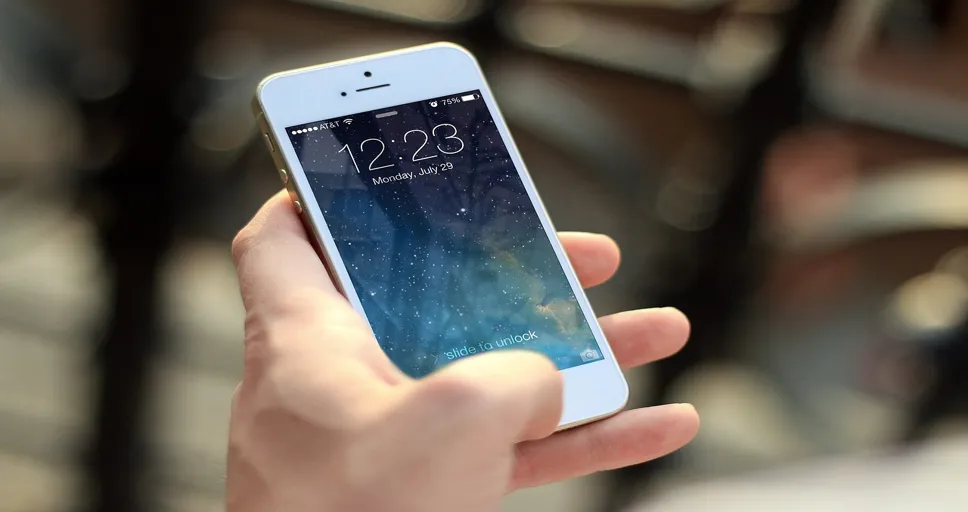Contents
- 1 Why He Seems Interested In Person But Not Over Text
- 1.1 Presence and Authenticity in Personal Interactions
- 1.2 Texting as a Secondary Communication Tool
- 1.3 The Influence of Technology on Social Interactions
- 1.4 Personal Boundaries and the Pace of Communication
- 1.5 Misinterpretation and the Limits of Texting
- 1.6 Recognizing Individual Differences in Communication
- 2 Analyzing Communication Styles
- 2.1 The Dichotomy of Digital vs. In-Person Communication
- 2.2 Cultural and Personal Influences on Communication
- 2.3 The Impact of Introversion vs. Extroversion
- 2.4 Technological Proficiency and Communication
- 2.5 The Role of Communication Skills in Expressing Interest
- 2.6 Adaptive Communication in Relationships
- 3 The Role of Non-Verbal Cues
- 4 Considering Modern Dating Etiquette
- 4.1 The Evolution of Dating Communication
- 4.2 Texting Versus Face-to-Face Interactions
- 4.3 Reading Into Response Times
- 4.4 The Overanalysis of Digital Communication
- 4.5 Expressing Interest in the Digital Age
- 4.6 Encouraging Open Conversations About Communication Preferences
- 4.7 Setting Realistic Expectations
- 5 Balancing Texting and Personal Interactions
- 5.1 Understanding the Weight of Texts and In-Person Chemistry
- 5.2 Establishing a Rhythm in Communication
- 5.3 The Role of Texting in Enhancing Connection
- 5.4 Personal Interaction: The Cornerstone of Relationships
- 5.5 Managing the Imbalance
- 5.6 Integrating Texting into the Flow of the Relationship
- 5.7 Closing Thoughts on Texting Etiquette
- 6 Managing Expectations and Boundaries
- 7 Navigating the Next Steps
- 8 Frequently Asked Questions
- 8.1 Does lack of texting mean lack of interest?
- 8.2 Can someone be interested but not text?
- 8.3 Does texting less make them want you more?
- 8.4 Why does he act different in person than over text?
- 8.5 Why does he flirt over text but not in person?
- 8.6 Is it better to text less in a relationship?
- 8.7 Is it normal for couples to text less?
- 8.8 What are red flags when texting a guy?
- 8.9 What are some red flags in texting?
- 8.10 How often should you text in a healthy relationship?
- 8.11 Is he not interested if he doesn t text everyday?
- 9 Wrapping Up the Mixed Messages
- 10 Recommended Authors For Further Reading
Understanding why he seems interested in person but not over text can be perplexing. It’s a scenario many women may find themselves in with the dynamic shifts of modern dating. When he’s face to face with you, his body language, voice tone, and consistent eye contact might suggest a strong mutual connection. However, the lack of enthusiasm over text messages may cast doubt on his interest.
To unravel this behavior, consider the various factors at play. It’s essential to acknowledge that some individuals are not as expressive or comfortable with virtual communication as they are with in-person interactions. For some, text messages feel less personal and do not carry the same weight as a direct conversation. Others may find it challenging to convey tone and emotion through text, which can lead to misunderstandings about their level of interest.
Moreover, the frequency and content of the texts can also be misleading. If the texts are sparse or strictly functional without a hint of flirtation, it doesn’t necessarily mean a lack of interest. It could be indicative of his texting style or his uncertainty about how to maintain engagement over text.
Taking the time to understand these nuances is crucial before drawing conclusions about his interest. It opens up a pathway to clearer communication, allowing for a more profound understanding of his interaction patterns. By paying close attention to these details, you can gain better insight into his behavior, ensuring that you are both on the same page.
- Some individuals communicate better in person than in text, due to the rich context provided by body language and vocal tone.
- Texting may serve as a functional tool for making plans, not a platform for flirtation or deep conversation.
- A lack of expressive texting doesn’t necessarily mean disinterest; it may indicate a different communication style or preference.
- Misunderstandings in text communication can stem from the absence of non-verbal cues, making in-person interaction appear more engaging.
- Direct conversation about texting habits and expectations can help align understanding and reduce confusion.
- Communication styles may vary with cultural, personal, and technological influences, affecting the depth of interaction in different mediums.
- Adaptive communication is key; recognizing and adjusting to each other’s styles can improve the relationship.
Why He Seems Interested In Person But Not Over Text
When navigating the complexities of modern relationships, it isn’t uncommon to encounter situations where he seems interested in person but not over text. This disparity can create confusion and frustration, but there are several plausible explanations for such mixed signals.
Presence and Authenticity in Personal Interactions
Personal interactions often offer a richer, more nuanced form of communication than texting. In face-to-face conversations, people are present in the moment, which can lead to a more authentic and engaged interaction. He may be the type who thrives on the immediacy of personal contact, where the energy and chemistry between two people can be felt more directly. This can make him seem very interested when you’re together, as the physical presence amplifies his natural responsiveness.
Texting as a Secondary Communication Tool
For some, texting is simply a supplementary form of communication meant for quick exchanges of information rather than prolonged conversations. This doesn’t necessarily reflect his level of interest but could signify a preference for how he communicates. If he uses texts to arrange meet-ups or share specific details rather than engage in chit-chat, it may appear that he’s less interested over text, when in reality, he might be reserving in-depth conversations for in-person encounters.
The Influence of Technology on Social Interactions
The rapid advancement of technology has transformed how we interact with one another. With this change comes an array of communication styles and preferences. He might not be adept at or may even dislike conveying emotions and feelings through a digital medium. Some people are less skilled at expressing themselves where non-verbal cues are absent, leading to a stark contrast between their online and offline interaction styles.
Personal Boundaries and the Pace of Communication
Individuals also set their boundaries regarding how much they share and how quickly they progress a relationship. If he is cautious about keeping the conversation light over text and more open when you’re together, it could be his way of managing the pace at which your relationship develops. He may value the quality of exchanges over the quantity, choosing to engage more meaningfully in person.
Misinterpretation and the Limits of Texting
Texting lacks the ability to communicate tone, timing, and context effectively. Messages can be misinterpreted, and intentions can be misunderstood. If he seems more engaged in person, it might be because non-verbal cues like gestures, facial expressions, and voice inflection provide a clearer, more accurate message. In contrast, a text’s brevity can sometimes mistakenly convey disinterest or detachment.
Recognizing Individual Differences in Communication
Acknowledging individual differences is vital when deciphering someone’s level of interest. Some may not view texting as an intimate or serious means of building a connection. This distinction does not necessarily reflect his level of interest in you but rather his personal and possibly generational perspective on communication tools.
Decoding his behavior requires a combination of patience, understanding, and open dialogue. Observing how he interacts in different scenarios will offer valuable insights into his communication preferences and intentions. When in doubt, a direct conversation about each other’s texting habits and preferences can help clarify uncertainties and align expectations. This approach to communication ensures that both parties feel comfortable with how they connect, both in person and over digital platforms.
Analyzing Communication Styles
Communication is a multifaceted aspect of any relationship, and understanding it requires attention to the different styles individuals may exhibit. When analyzing why he seems interested in person but not over text, it’s essential to evaluate how communication styles in various contexts may affect perception and interactions.
The Dichotomy of Digital vs. In-Person Communication
The difference between digital and in-person communication can be striking. In person, he might be engaging, using a tone of voice, pace, and pitch to express interest, which are absent in digital communication. Texting often strips away these layers of emotional context, leading to a more truncated form of interaction. This lack of emotional cues can make texts seem impersonal and detached, whereas in-person conversations allow for a full spectrum of emotional expression.
Cultural and Personal Influences on Communication
Cultural background and personal experience play significant roles in shaping one’s communication style. Some cultures rely heavily on verbal expressions and direct communication, while others may place greater emphasis on non-verbal cues. Similarly, individual upbringing and personal preferences can dictate how someone chooses to communicate. He may have grown up in an environment where texting was not the primary mode of staying in touch, influencing his comfort level with this type of communication.
The Impact of Introversion vs. Extroversion
Introverted individuals might find in-person interactions draining over long periods, yet they often thrive in one-on-one or small group settings where they feel a connection. Conversely, extroverts may enjoy the immediacy of in-person interaction and find texting too limiting to convey their personality. Understanding these traits can help in interpreting why he seems interested in person but not over text, as it aligns with inherent social preferences.
Technological Proficiency and Communication
Technological ease or lack thereof can also affect communication style. Someone who is less adept with texting or finds the technology impersonal may not communicate as effectively or frequently via text. This disparity often leads to the assumption that a lack of text engagement equates to a lack of interest, which isn’t always the case.
The Role of Communication Skills in Expressing Interest
Effective communication skills are crucial for conveying interest. He may be more articulate and expressive when speaking directly than when writing. This discrepancy can lead to misunderstandings if his text messages are concise or less engaging. When he’s able to converse without the barrier of a screen, his true level of interest may become more apparent through his ability to articulate his thoughts and feelings directly.
Adaptive Communication in Relationships
Adaptive communication is the ability to change one’s communication style according to the situation. If he is more responsive and interactive in person, he may naturally adapt his style to suit face-to-face interactions better. Recognizing and adapting to each other’s communication styles can enhance understanding and reduce the chances of misreading signals.
In conclusion, dissecting communication styles is critical when considering why he seems interested in person but not over text. By acknowledging the nuances of digital and face-to-face interactions, cultural influences, personality traits, technological skills, and the need for adaptive communication, a clearer picture emerges. It’s beneficial to address these differences directly, fostering a dialogue that can lead to a deeper understanding and appreciation of each other’s preferred ways of connecting.
The Role of Non-Verbal Cues

Non-verbal cues are a powerful component of communication, often speaking louder than words. When analyzing mixed signals, such as when he seems interested in person but not over text, it becomes evident that these cues play a crucial role.
Understanding Non-Verbal Communication
Non-verbal communication includes facial expressions, body language, gestures, posture, and tone of voice. When you’re face-to-face with someone, these elements contribute significantly to the conversation. They can indicate interest, engagement, attraction, and emotion, often subconsciously. For instance, leaning in during a conversation, maintaining eye contact, and mirroring your movements can all signal interest without a single word being exchanged.
Non-Verbal Cues in Person
In-person, he might subconsciously communicate his interest through a series of non-verbal signals. These could range from the way he looks at you, the frequency of his smiles, to the openness of his posture. These signs can form a compelling argument that he’s genuinely interested, but these are absent when the interaction moves to a textual platform.
The Absence of Non-Verbal Cues Over Text
Over text, the absence of these cues can lead to a starkly different interaction experience. Without the physical presence to read, a message’s interpretation relies solely on the literal words and any digital expressions, like emoticons, used to supplement them. Consequently, even if he uses the same language in both settings, the messages may carry a different weight when non-verbal cues are missing. This can create a scenario where he seems interested in person but not over text, simply because the rich context provided by non-verbal communication is lost.
The Importance of Timing and Response
Timing and the flow of interaction also contribute to reading non-verbal cues. The pause before a reply, the duration of eye contact, and the spontaneous reactions to comments all provide feedback in real-time during in-person interactions. However, over text, response times can be influenced by various factors unrelated to the level of interest, such as availability, distractions, or simply not having the phone at hand.
Interpreting Emojis and Punctuation
In the absence of physical cues, people often rely on emojis, GIFs, and punctuation to express what body language and facial expressions would normally convey. However, the interpretation of these digital stand-ins can vary greatly between individuals, leading to misunderstandings. He may use fewer emojis or less expressive punctuation, which could make his texts seem more dispassionate compared to the warmth conveyed by his non-verbal cues in person.
Bridging the Gap Between Text and In-Person Interactions
Bridging this gap requires an awareness of the limitations of text communication and an effort to interpret messages without the help of non-verbal context. It’s beneficial to discuss how each person prefers to communicate and to establish an understanding that texting is often not reflective of someone’s true feelings or the dynamics present when together in person.
To fully grasp why he seems interested in person but not over text, consider these non-verbal factors and their significant impact on communication. It is also worthwhile to encourage more voice and video calls, where some of the non-verbal aspects can be reintegrated into long-distance conversations. By doing so, a more accurate picture of his level of interest may be maintained, ensuring that digital communication complements rather than complicates the understanding of each other’s intentions.
Considering Modern Dating Etiquette
Modern dating etiquette can often seem like a maze of unwritten rules and ambiguous expectations, especially when it comes to the conundrum where “he seems interested in person but not over text.” Understanding this etiquette is crucial for navigating the dating world and interpreting mixed signals in a way that aligns with contemporary relationship dynamics.
The Evolution of Dating Communication
Dating has undergone a significant transformation with the advent of technology. Texting has become a cornerstone of how couples communicate, leading to new challenges. It’s now less about picking up calls and more about instant messaging, often leaving individuals to decipher tone and intent without the benefit of accompanying non-verbal cues.
Texting Versus Face-to-Face Interactions
When comparing texting to face-to-face interactions, it’s important to recognize that people may behave differently across these mediums. Modern dating etiquette recognizes that one may be more expressive and engaging in person, as this allows for a complete sensory experience and immediate feedback. On the other hand, the same person might be more reserved over text, which can be a source of confusion and misinterpretation.
Reading Into Response Times
Response times have also become a barometer for interest, with quick replies often being interpreted as a sign of keen interest. When he seems interested in person but not over text, it may be that the time he takes to reply to messages doesn’t align with the interest he shows when you’re together, leading to mixed messages.
The Overanalysis of Digital Communication
With the constant presence of digital communication, there’s a tendency to overanalyze every message. When considering modern dating etiquette, it’s important to remember that not everyone places the same importance on digital communication. For some, a text is just a text, not a manifesto of their feelings, and their lack of texting enthusiasm doesn’t necessarily indicate a lack of interest.
Expressing Interest in the Digital Age
In the digital age, expressing interest can be as simple as frequent texts or as complex as crafting a message with just the right balance of wit and emoticons. It’s an art form where clarity often succumbs to the ambiguity of interpretation. A person who is warm and open in person may not translate that warmth into text, not out of disinterest, but possibly due to uncertainty about how to convey the same level of engagement digitally.
Encouraging Open Conversations About Communication Preferences
One of the best ways to manage modern dating etiquette is by encouraging open conversations about communication preferences. Discussing how each individual feels about texting and other forms of digital communication can help both parties understand what to expect from each other. It’s a practical step towards eliminating misunderstandings that arise when he seems interested in person but not over text.
Setting Realistic Expectations
Lastly, setting realistic expectations about communication habits is vital. In the era of instant gratification, it can be frustrating when someone doesn’t text back immediately or with the same enthusiasm shown in person. However, acknowledging that texting behavior is not always a reliable indicator of interest can save one from undue stress and provide a more balanced perspective on dating.
In sum, considering modern dating etiquette is about understanding the multifaceted ways in which we communicate interest and intention. By recognizing the nuances of digital interaction, setting clear communication preferences, and maintaining realistic expectations, one can navigate the complexities of dating with more confidence and less confusion. As we advance, embracing these facets of modern dating will continue to be key in decoding the signals, mixed or not, that we encounter in our quest for companionship.
Balancing Texting and Personal Interactions

In the realm of dating and relationships, striking a balance between texting and personal interactions is often easier said than done. This balance becomes particularly perplexing when he seems interested in person but not over text, which can throw off even the most confident daters. This section will delve into the ways individuals can navigate this balance, ensure clear communication, and maintain a healthy connection with potential partners.
Understanding the Weight of Texts and In-Person Chemistry
The dichotomy between digital interaction and physical presence is at the heart of modern relationships. While in-person chemistry is irreplaceable, texting serves as a bridge between meetings. It’s crucial to understand that the weight one person gives to their digital communication may differ greatly from another’s, causing discrepancies in how they relate across different contexts.
Establishing a Rhythm in Communication
Developing a communication rhythm can help mitigate the confusion when he seems interested in person but not over text. It’s about finding a tempo that works for both individuals, allowing them to express interest without feeling overbearing or distant. A rhythm can involve regular texting habits, like sending good morning messages or having set times when both parties are available for a deeper conversation.
The Role of Texting in Enhancing Connection
Texting should complement the in-person relationship, not compete with it. When used effectively, it can be a tool to enhance the connection, share experiences throughout the day, and build anticipation for the next meeting. However, when he seems interested in person but has a more laid-back approach to texting, it may simply be his way of prioritizing the quality of in-person interactions over the quantity of texts exchanged.
Personal Interaction: The Cornerstone of Relationships
While texting is an essential aspect of contemporary dating, personal interactions are the cornerstone of building a strong relationship. It is during face-to-face time that couples can fully engage with each other, read each other’s non-verbal cues, and build memories. It’s important for individuals to use the time spent together to communicate openly about their texting habits and how it can sometimes seem incongruent with their in-person engagement.
Managing the Imbalance
Managing the imbalance requires understanding and patience. If he seems interested in person but not over text, it might be helpful to discuss each other’s communication styles. Some people may not enjoy texting as a form of communication, while others might not be as articulate or expressive in writing. Recognizing these differences is key to managing expectations.
Integrating Texting into the Flow of the Relationship
Finding ways to integrate texting into the flow of the relationship can involve creative solutions. For example, if spontaneous texting is challenging for one person, perhaps they can share their day’s highlights in a summarized text or a nightly phone call. Conversely, setting aside the phone during dates to ensure quality time is another way to show that, while the texts may be sparse, the in-person connection is valued above all else.
Closing Thoughts on Texting Etiquette
In conclusion, balancing texting and personal interactions is about adapting to each other’s communication styles and respecting personal preferences. It involves acknowledging that while texts are an integral part of connecting in the digital age, they do not always have to mirror the depth of in-person interactions. By setting realistic expectations and fostering understanding, a happy medium can be found, enabling a happy relationship to grow from a clear understanding of where each person stands, both in message inboxes and in real-life interactions.
Managing Expectations and Boundaries
Navigating the complexities of modern dating can often lead to confusion, especially when interpreting someone’s interest level. When he seems interested in person but not over text, it’s essential to manage expectations and establish boundaries to avoid misunderstandings and ensure that both parties are on the same page.
Recognizing Communication Preferences
Everyone has their own unique way of communicating affection and interest. Some may be effusive in their texts, using them to keep the conversation going between dates. Others might view texting as a pragmatic tool for making plans rather than for sharing feelings or daily updates. Recognizing and respecting these personal communication styles can prevent one from reading too much into the frequency or tone of messages.
Setting Clear Boundaries
It’s important to be upfront about how you prefer to communicate. Having a conversation about how often and what type of communication you’re both comfortable with can set the stage for a healthier exchange. If texting is important to you but the person you’re seeing doesn’t prioritize it, setting a boundary regarding response times or the content of messages can help align your expectations with reality.
The Importance of Transparency
Transparency about how you interpret digital and in-person interactions is vital. If there is a noticeable disparity between his enthusiasm during face-to-face encounters and his texting habits, addressing it directly can clarify whether this difference is due to personal preference, lifestyle, or interest level. This kind of open dialogue can foster mutual understanding and reduce the potential for mixed signals.
Interpreting Digital Silence
When he seems interested in person but not over text, it might be easy to jump to conclusions. However, digital silence doesn’t always mean disinterest. It could indicate a busy schedule, a dislike for texting, or simply a different way of engaging with others. Instead of assuming the worst, consider other signs of his interest that manifest when you’re together in person.
Adjusting Your Expectations
Sometimes, managing expectations means adjusting them to fit the situation. If you find that you’re more invested in texting as a part of relationship building than he is, you might need to reassess what you’re comfortable with. Can you be content with less frequent texting if his in-person behavior consistently shows interest? Being flexible can be key to happiness in the relationship.
Respecting Non-Text Communication
In situations where someone expresses more through actions than words, it’s crucial to place value on those non-text expressions of interest. If he plans thoughtful dates, shows attentiveness when you’re together, and makes an effort to connect in ways that are meaningful to you, these are all positive signs worth weighing against his texting habits.
Conclusion
Managing expectations and setting boundaries are fundamental when there is a discrepancy between someone’s in-person demeanor and their texting behavior. It helps preserve your emotional well-being and builds a foundation for a relationship based on understanding and mutual respect. Remember, the goal is to find a balance that satisfies both partners’ needs, ensuring that everyone feels valued and heard, no matter the medium of communication.

Once you’ve encountered the perplexing situation where he seems interested in person but not over text, deciding how to proceed can be challenging. Moving forward requires a careful approach, paying close attention to what you want, how you communicate, and how to interpret the mixed signals you’re receiving. Here’s how to navigate the next steps in such a scenario.
Assess Your Feelings
Firstly, take stock of your own feelings. Are you comfortable with a relationship that has less frequent textual communication? Or do you feel neglected when he doesn’t engage in texting the way you’d expect? Identifying what you need from the interaction will guide your approach to the situation.
Communicate Your Observations
It’s often said that communication is the key to a successful relationship. If you’re feeling confused because he seems interested in person but not over text, it’s important to communicate your observations. Approach the subject openly and without accusations. It’s possible he is unaware of the mixed signals he’s sending.
Gauge His Interest
Use your communication as a chance to gauge his level of interest. Pay attention to how he responds when you bring up his texting habits. Does he make an effort to change, or does he explain why his texting behavior is different from his in-person interaction? His reaction will provide insight into his perspective on the relationship.
Discuss Communication Needs
Have an honest discussion about what you both expect in terms of communication. Some people are not texters and prefer to share significant interactions in person. Understanding each other’s communication preferences can help create a plan that works for both of you.
Establish a Compromise
Compromise is crucial. If he’s truly interested in keeping the relationship going, he might be willing to make more of an effort to text. On the other hand, you might need to adjust your expectations about the immediacy and volume of texting in the relationship.
Set Realistic Expectations
Understand that even with the best efforts, someone’s texting habits may not change overnight, and that’s okay. Set realistic expectations and give it some time. Finding a rhythm takes patience and sometimes a bit of trial and error.
Consider Alternative Methods of Communication
If texting isn’t his strength, consider other methods of staying connected between face-to-face interactions, such as phone calls or video chats. These can also be more personal and engaging ways to communicate for some individuals.
Take It as a Sign of Maturity
Navigating this discrepancy in communication styles can actually be a sign of maturity in the relationship. It demonstrates that you’re both willing to work on issues and find common ground.
Reflect on the Relationship’s Progress
Finally, reflect on the progress of the relationship as you implement these steps. Has communication improved? Are you both feeling more connected? The answers to these questions will help determine the future course of your relationship.
Conclusively, when faced with a scenario where he seems interested in person but not over text, the key lies in direct communication, understanding, and compromise. By navigating these next steps with care, you can decode the mixed messages and build a stronger, more understanding relationship.
- Some individuals express interest more clearly in person due to the richness of face-to-face interaction.
- Texting may be used by some as a logistical tool, not reflecting their level of relational interest.
- Technological advancements and personal communication preferences impact text engagement.
- Misinterpretations in texting often occur due to the lack of non-verbal cues.
- Individual pacing and boundaries in communication can explain different levels of text interaction.
- Direct conversations about texting preferences can clarify misunderstandings and align expectations.
Frequently Asked Questions
Does lack of texting mean lack of interest?
Lack of texting can sometimes indicate a lack of interest, but it’s not always definitive since people’s texting habits vary widely.
Can someone be interested but not text?
Yes, someone can be interested but not text frequently due to busy schedules, differing communication styles, or a preference for in-person interactions.
Does texting less make them want you more?
Texting less can sometimes increase interest if it’s part of playing hard to get, but it may also lead to misunderstandings or a loss of connection.
Why does he act different in person than over text?
He may act different in person than over text due to the lack of non-verbal cues in texting, comfort levels in social situations, or simply a difference in communication skills.
Why does he flirt over text but not in person?
He might flirt over text but not in person because texting offers more control over the interaction and can feel safer for expressing feelings without immediate consequences.
Is it better to text less in a relationship?
The ideal amount of texting in a relationship depends on the communication needs and preferences of both partners; there is no one-size-fits-all answer.
Is it normal for couples to text less?
It’s normal for couples to text less over time as they become more secure in their relationship and as their communication evolves to include other forms.
What are red flags when texting a guy?
Red flags when texting a guy include manipulative behaviors, consistent late or unreplied messages, demanding texts, and disrespectful or derogatory comments.
What are some red flags in texting?
Some red flags in texting are excessive jealousy, control issues, lack of respect, overly aggressive or sexual messages early on, and dishonesty.
How often should you text in a healthy relationship?
In a healthy relationship, couples should text as often as it feels right for both, ensuring that communication is open, respectful, and mutually satisfactory.
Is he not interested if he doesn t text everyday?
Not necessarily; frequency of texting doesn’t always indicate the level of interest as individuals have different preferences and styles for communication.
Wrapping Up the Mixed Messages

The complexities of modern dating often lead to situations where he seems interested in person but not over text, leaving one to wonder about the true intentions and feelings of their potential partner. Resolving these mixed messages is not just about confronting the issue but also about understanding and adapting to the communication dynamics present in your interactions.
Understanding that someone may express interest differently in varied settings is key. While in person, the chemistry may be palpable, and his engagement in conversations may be lively and attentive. In contrast, the lack of his textual communication might not necessarily indicate a lack of interest but rather a discomfort or disinterest with digital communication as a medium itself.
When concluding thoughts on these mixed signals, it’s essential to focus on the broader spectrum of the relationship’s communication. Does he make an effort to set up dates and does he show up for you in other ways that are possibly more telling than a text message? The substance of your interactions often carries more weight than the frequency of messages exchanged.
It is also beneficial to consider the quality of your in-person time together. If he seems interested in person, giving you his full attention and being present in the moment, these are positive signs that he values your company. Balancing these experiences with the disparity in texting can lead to a more comprehensive understanding of the relationship.
Moving forward, the emphasis should be on establishing open and honest communication about your needs and expectations. If regular texting is something you value highly, express this to him. Conversely, be prepared to listen to his side—maybe he has valid reasons for his texting patterns that you can empathize with.
In wrapping up, recognize that no two people are the same, and thus, each relationship will have its unique flow of communication. Patience and a willingness to adapt can go a long way in aligning your interactions with the reality of your connection. Whether it’s finding alternative methods of staying in touch or coming to a mutual understanding of when and how you communicate best, the solution lies in working together to bridge the gap.
By acknowledging the importance of managing expectations and understanding individual differences in expressing interest, you can steer clear of unnecessary confusion. Keep in mind that actions, both in real life and digital communication, are vital in painting the complete picture of where you both stand.
In sum, if he seems interested in person but not over text, it’s a situation that many encounter, and it’s not an insurmountable problem. With a little effort and a lot of communication, you can unravel the mixed messages and build a relationship that feels rewarding and consistent across all forms of interaction.
Recommended Authors For Further Reading
- John Gray – Gray is best known for his book “Men Are from Mars, Women Are from Venus.” His works explore the complexities of relationships and communication between genders, which can be insightful on the topic of mixed signals.
- Aziz Ansari – As a comedian who ventured into the topic of modern dating in his book “Modern Romance,” Ansari offers a humorous yet thoughtful look at how communication technology affects romantic connections.
- Matthew Hussey – A dating coach, YouTube personality, and author, Hussey gives practical advice on understanding and navigating the modern dating scene, which is rife with mixed signals.
- Sherry Turkle – Turkle’s research on psychoanalysis and human-technology interaction provides profound insights into how digital communication can alter interpersonal relationships, including romantic ones.
- Debra Fine – A former engineer turned speaker and author, Fine writes about the art of small talk and interpersonal communication, which can be crucial in understanding the subtleties of expressing interest both in person and over text.


